Photo credits: The National Archives/The Zinn Education Project
The so-called “Original 33” were the first 33 African-American members of the Georgia General Assembly who were elected to office in 1868, during the Reconstruction era. They were among the first African-American state legislators in the United States. Twenty-four of the members were ministers.
After most of the legislators voted for losing candidates in the legislature’s elections for the U.S. Senate, the white majority conspired to remove the black and mixed-ethnicity members from the Assembly. Most of the black delegates to the state’s post-war constitutional convention voted against including into the constitution the right of black legislators to hold office, a vote which Rep. Henry McNeal Turner came to regret.
The members were expelled by September 1868. On October 6, 1868, a black state convention was held in Macon, Georgia. This convention was held to vehemently protest the systematic expulsion of black politicians from the Georgia State Legislature.
The ex-legislators petitioned the federal government and state courts to intervene. In White v. Clements (June 1869), the Supreme Court of Georgia ruled 2-1 that black people did have a right to hold office in Georgia. In January 1870, commanding general of the District of Georgia Alfred H. Terry began “Terry’s Purge”, removing ex-Confederates from the General Assembly, replacing them with Republican runners-up, and reinstating the black legislators.
This resulted in a Republican majority being held in both houses. From that point, the General Assembly accomplished the ratification of the 15th Amendment, chose new senators to go to Washington, and adopted public education.
The work of the Republican majority was short-lived after the “Redeemer” Democrats won majorities in both houses in December 1870. The Republican governor, Rufus Bullock, after trying and failing to reinstate federal military rule in Georgia, fled the state. After the Democrats took office, they began to enact harsh recriminations against Republicans and African Americans.
They did this by using terror, intimidation, and the Ku Klux Klan, which lead to black disenfranchisement by the 1890s. One-quarter of the black legislators were killed, threatened, beaten, or jailed. The last African-American legislator, W. H. Rogers, resigned in 1907. Afterward, no African American held a seat in the Georgia legislature until civil rights attorney Leroy Johnson was elected a Democratic state senator in 1962.
The “Original 33” are commemorated in the sculpture Expelled Because of Their Color, on the grounds of the Georgia State Capitol.
Research References:
- Duncan, Russell (1986). Freedom’s Shore. University of Georgia Press. p. 54. Retrieved February 8, 2018 – via Internet Archive.
- ^ Conway, Alan (1966). “The Reconstruction of Georgia”. University of Minnesota Press. p. 165. Retrieved February 8, 2018 – via Google Books.
- ^ “Journal of the Senate of the State of Georgia, at the Annual Session of the General Assembly”. January 10, 1870. p. 137. Retrieved February 8, 2018 – via Google Books.
- ^ McDonald, Laughlin (2003). A Voting Rights Odyssey: Black Enfranchisement in Georgia. Cambridge University Press. p. 23. Retrieved February 8, 2018 – via Internet Archive.
- ^ Jump up to:a b Drago, Edmund L. (April 13, 2016). “Black Legislators during Reconstruction”. New Georgia Encyclopedia. Georgia Humanities and University of Georgia Press. Retrieved September 9, 2018.
*BlackThen.com writer and historian Victor Trammell edited and contributed to this report.







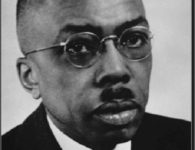
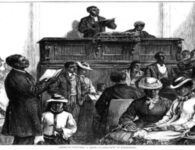
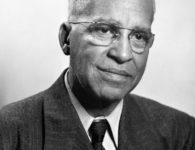
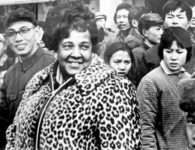



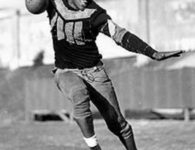


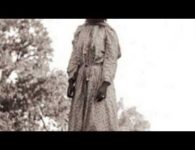
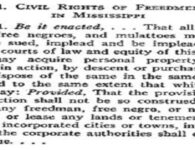


No comments